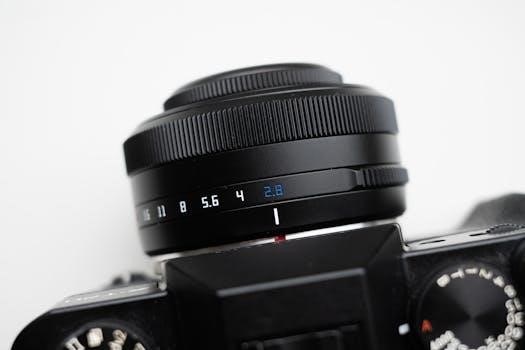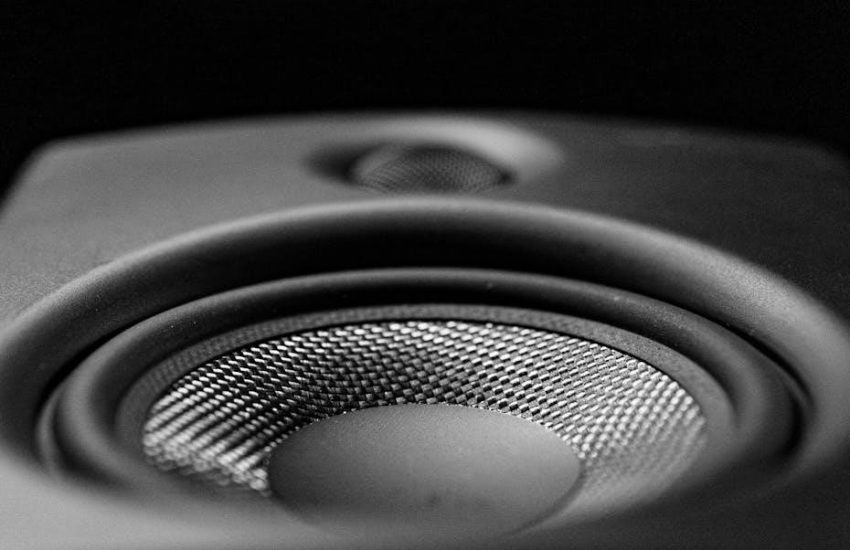moog labyrinth manual
Moog Labyrinth Manual⁚ A Comprehensive Guide
Embark on a sonic adventure with the Moog Labyrinth! This comprehensive guide serves as your essential companion, unlocking the full potential of this unique synthesizer. Discover its features, controls, and patching techniques, empowering you to craft innovative sounds and explore uncharted sonic territories with confidence.
Overview of the Moog Labyrinth
The Moog Labyrinth is a semi-modular parallel generative analog synthesizer designed to inspire exploration and discovery in sound. It stands out with its dual generative sequencers and parallel analog signal paths, offering a unique blend of subtractive and complex spectra generation. This instrument invites users to delve into uncharted sonic territories, fostering creativity and experimentation. Its design allows for the creation of evolving soundscapes, intricate patterns, and unexpected textures, making it a powerful tool for both seasoned synthesists and adventurous newcomers.
At its core, the Labyrinth encourages users to “get lost completely” in the synthesis process. It provides a hands-on experience that facilitates the creation of intertwining melodies and mutating timbres. The Labyrinth’s innovative architecture, featuring a Voltage-Controlled Wavefolder (VCW) and a morphing Voltage-Controlled Filter (VCF), sets it apart from traditional Moog instruments, opening up a world of sonic possibilities beyond the familiar square and saw waves. The Labyrinth is more than just a synthesizer; it’s an “idea machine” that challenges perceptions of sound and inspires new musical pathways.
Unboxing and Included Items
Upon opening your Moog Labyrinth, you’ll discover a carefully curated collection of items designed to kickstart your sonic explorations. The centerpiece, of course, is the Moog Labyrinth synthesizer itself, a testament to Moog’s commitment to quality and innovation. Alongside the instrument, you’ll find a power supply to get you up and running, ensuring seamless integration into your studio setup.
To further enhance your patching experience, Moog includes a selection of patch cables, allowing you to immediately begin experimenting with the Labyrinth’s semi-modular architecture. Patch overlay cards are also provided, offering visual guidance and inspiration for creating unique sounds. A registration card is included to register your new equipment, alongside a quickstart guide and cheat codes to assist you with the equipment.. Furthermore, you’ll find safety and warranty information to ensure a secure and worry-free experience.
Note that a MIDI adapter is not included with the set of items.

Setup and Connections

Preparing your Moog Labyrinth for its inaugural sonic voyage is a straightforward process. Begin by connecting the included power supply to the designated input on the instrument’s rear panel, ensuring a secure and stable connection. Next, connect the power supply to a suitable power outlet, adhering to your region’s voltage requirements. Once powered on, the Labyrinth’s display will illuminate, indicating its readiness.
Now, consider your audio output options. The Labyrinth features a main output for sending the combined audio signal to your mixer, audio interface, or amplifier. Use standard audio cables to establish these connections. For incorporating external gear, the Labyrinth provides various patch points, allowing you to interface with other synthesizers, effects processors, and modular systems.
Experiment with different configurations to discover the Labyrinth’s full potential within your existing setup. Also, remember that MIDI adapter is not included in the equipment set.
Understanding the Dual Generative Sequencers
At the heart of the Moog Labyrinth lie its dual generative sequencers, the engines that drive its ever-evolving sonic landscapes. These sequencers are not your typical step sequencers; instead, they employ algorithms to create constantly shifting patterns, ensuring that each performance is unique. Each sequencer operates independently, allowing for intricate polyrhythms and evolving melodic interplay. Understanding their parameters is key to mastering the Labyrinth.

Explore the various controls that shape the sequencers’ behavior. Adjust the probability of note generation, alter the sequence length, and manipulate the range of pitches. Experiment with different scales and modes to create harmonic frameworks for your generative melodies. Furthermore, delve into the modulation options, using external sources or the Labyrinth’s internal modulation to influence the sequencers’ parameters in real-time.
By mastering these sequencers, you unlock the Labyrinth’s ability to conjure complex, evolving soundscapes.
Exploring Parallel Voices
The Moog Labyrinth distinguishes itself through its unique parallel voice architecture. This design allows for the simultaneous creation and manipulation of two independent sound paths, offering a wealth of sonic possibilities. Each voice comprises its own oscillator, wavefolder, filter, and amplifier, providing a complete signal chain for sculpting individual sounds. These parallel paths can be used to create rich, layered textures or to generate contrasting sonic elements that interact and evolve over time.
Experiment with different waveforms and settings for each oscillator to establish distinct timbral foundations. Use the wavefolders to add harmonics and complexity to each voice, creating everything from subtle warmth to aggressive distortion. Sculpt the sounds further with the voltage-controlled filters, shaping the frequency content and adding dynamic movement.
By carefully crafting and blending these parallel voices, you can create sonic textures that are both intricate and captivating, taking your sound design to new heights.
Panel Controls and Functions Explained
The Moog Labyrinth’s panel is meticulously designed, offering a hands-on approach to sound manipulation. Understanding each control is crucial for unlocking its sonic potential. The panel is divided into sections, each dedicated to a specific function within the signal path.
The oscillator section features controls for waveform selection, frequency, and tuning, allowing you to shape the fundamental sound source. The wavefolder section provides controls for adjusting the amount of harmonic distortion and timbre. The filter section offers controls for cutoff frequency, resonance, and filter mode, enabling precise shaping of the frequency content. The envelope generator section provides controls for attack, decay, sustain, and release, shaping the dynamic characteristics of the sound.
The sequencer section features controls for setting the sequence length, direction, and tempo. The patching section provides numerous patch points, allowing you to create custom signal routings and explore advanced modulation techniques. The output section provides controls for adjusting the overall volume and panning of the sound. Each control is clearly labeled and intuitively positioned, making it easy to experiment and discover new sonic possibilities.
Voltage-Controlled Wavefolder (VCW) Deep Dive
The Voltage-Controlled Wavefolder (VCW) in the Moog Labyrinth is a powerful tool for adding complex harmonics and timbral variations to your sound. Unlike traditional distortion circuits, the VCW folds the waveform back onto itself, creating a unique and dynamic form of harmonic distortion. This process introduces a rich spectrum of overtones, transforming simple waveforms into complex and evolving textures.
The VCW’s intensity is controlled by an external voltage source, allowing for dynamic modulation of the harmonic content. By modulating the VCW with an envelope generator, LFO, or even the sequencer, you can create sounds that morph and evolve over time. Experiment with different modulation sources to discover a wide range of timbral possibilities.
The VCW can be used to create a variety of sounds, from subtle warmth to aggressive distortion. It can also be used to create unique FM-like tones by folding sine or triangle waves. Exploring the VCW is essential for unlocking the Labyrinth’s full potential and crafting truly unique sounds. Understanding how it interacts with other modules opens up a world of sonic possibilities.
Voltage-Controlled Filter (VCF) Details
The Voltage-Controlled Filter (VCF) in the Moog Labyrinth is a crucial element in shaping the instrument’s sonic character. Unlike traditional Moog filters, this VCF offers a distinct tonal palette, providing unique sound sculpting capabilities. It’s a state-variable resonant filter, offering lowpass, highpass, and bandpass modes, each with its own sonic flavor. These modes allow for precise control over the frequency content of your sound.
The cutoff frequency of the VCF is voltage-controlled, allowing for dynamic modulation using various sources such as envelope generators, LFOs, or the sequencers. This modulation capability enables you to create expressive sweeps, rhythmic textures, and evolving soundscapes. Experiment with different modulation sources to unlock the full potential of the VCF.
Resonance, also known as feedback or emphasis, adds a peak at the cutoff frequency, accentuating certain frequencies and creating a more pronounced filtering effect. At higher resonance settings, the VCF can self-oscillate, producing a pure sine wave tone. Exploring the interplay between cutoff frequency, resonance, and modulation is key to mastering the Labyrinth’s filter and crafting a wide range of sounds.
Creating Percussive Sounds
The Moog Labyrinth, while not a traditional drum machine, offers surprising capabilities for creating a diverse range of percussive sounds. By creatively patching and manipulating its various modules, you can coax out everything from punchy kick drums to snappy snares and shimmering cymbal-like textures. The key lies in utilizing the noise source, envelope generators, and filters in tandem.
One effective technique is to patch the noise output directly into the Voltage-Controlled Filter (VCF). By setting a short decay time on Envelope Generator 2 (EG2) and using it to control the VCF’s cutoff frequency, you can create sharp, transient sounds reminiscent of snare drums or hi-hats. Experiment with different filter modes and resonance settings to sculpt the tone and character of these percussive elements.
For deeper, more resonant sounds like kick drums, try using the sine oscillator as a source and modulating its frequency with a fast envelope. The Voltage-Controlled Wavefolder (VCW) can also be used to add harmonic complexity and distortion, creating aggressive and punchy kick drum sounds. By carefully adjusting the parameters and exploring different patching configurations, the Labyrinth becomes a surprisingly versatile tool for crafting unique and compelling percussion.
Patching Techniques and Examples
The Moog Labyrinth’s semi-modular design invites exploration through patching. Experimentation is key, but here are a few techniques to get you started. First, try modulating the frequency of one oscillator with the output of the other for FM synthesis. Adjusting the modulation index will create complex, evolving timbres.
Next, explore using the sequencer outputs to control the wavefolder’s parameters. This allows for rhythmic changes in timbre and harmonic content, adding movement and interest to your sounds. Additionally, patching the noise source into the filter cutoff, modulated by an envelope, enables the creation of percussive sounds with unique textures.
Consider using the external input to process other audio sources through the Labyrinth’s filter and wavefolder. This allows you to add the Labyrinth’s character to any sound. For example, try running a drum machine through the filter and modulating the cutoff with the sequencer for rhythmic filtering effects. These are just starting points; the possibilities are endless!
Troubleshooting and FAQs
Encountering a snag with your Labyrinth? Here’s a troubleshooting guide and FAQs. No sound? Ensure the power supply is connected and the unit is switched on. Check all patch cables are securely connected and the output volume is at an audible level. Verify that the oscillators are producing a signal and the VCAs are open.
Sequencer not running? Confirm the tempo is set appropriately and the sequencer is enabled. Check the gate outputs are triggering the intended modules. Unexpected sounds? Review your patch connections, ensuring signals are routed as intended. Experiment with subtle adjustments to control parameters to tame unruly timbres.
FAQ⁚ Can I sync the Labyrinth to external gear? Yes, via MIDI or clock input. Is the Labyrinth compatible with Eurorack? Yes, it features standard Eurorack patching. Where can I find more patches? Online forums and communities are great resources for sharing patches and tips. If problems persist, contact Moog support.
Manual Download and Additional Resources
Dive deeper into the Labyrinth with these resources! Download the complete user manual for detailed information on every feature, parameter, and function. Explore advanced patching techniques, signal flow diagrams, and troubleshooting tips to maximize your creative potential.
Expand your knowledge with tutorial videos covering everything from basic setup to advanced sound design. Discover community forums where users share patches, tips, and tricks. Access firmware updates and software tools to keep your Labyrinth running smoothly and unlock new capabilities.

Connect with Moog’s official website for product support, warranty information, and the latest news. Explore articles and interviews with artists using the Labyrinth in innovative ways. Unlock your sonic potential with this treasure trove of information and inspiration!


